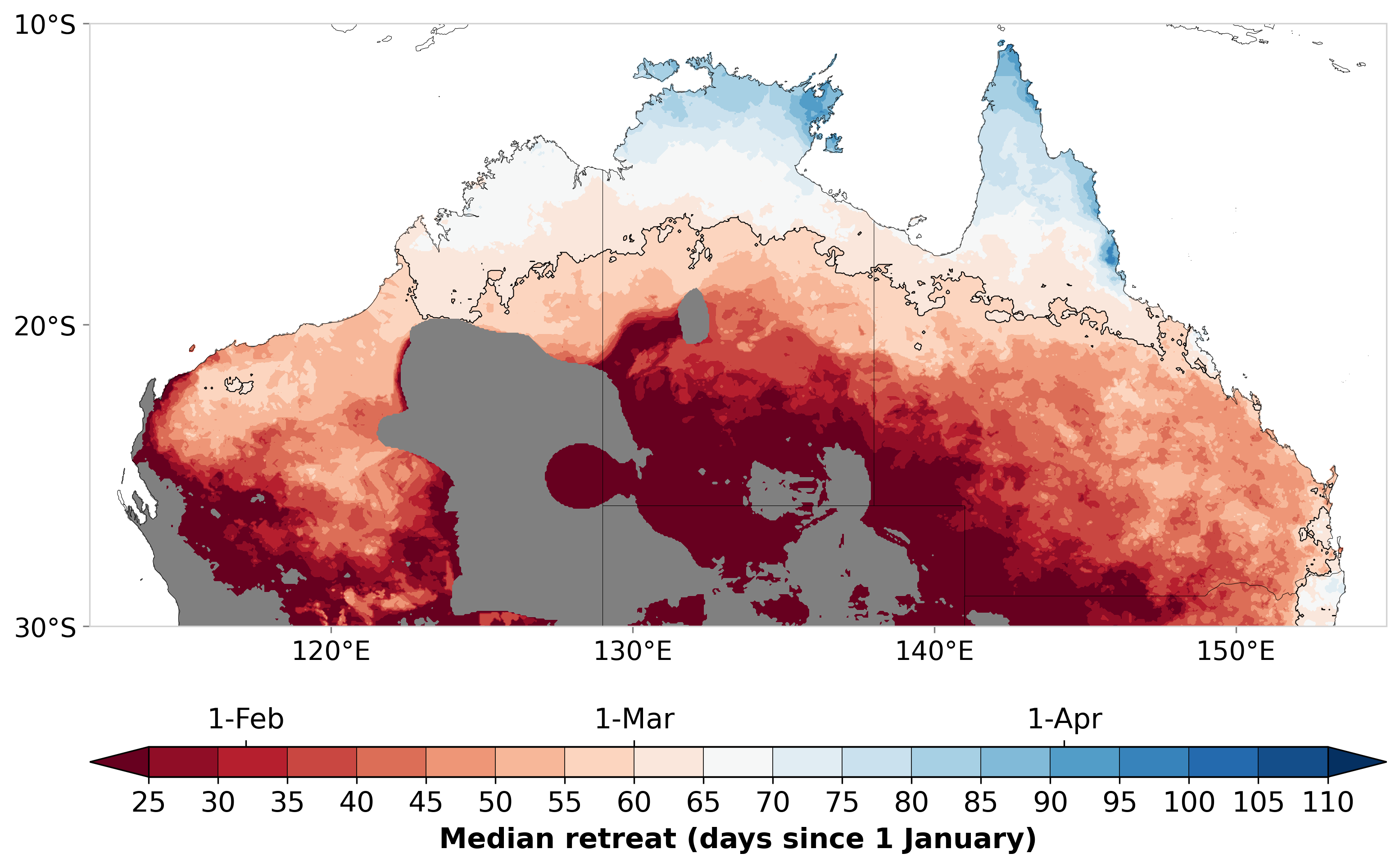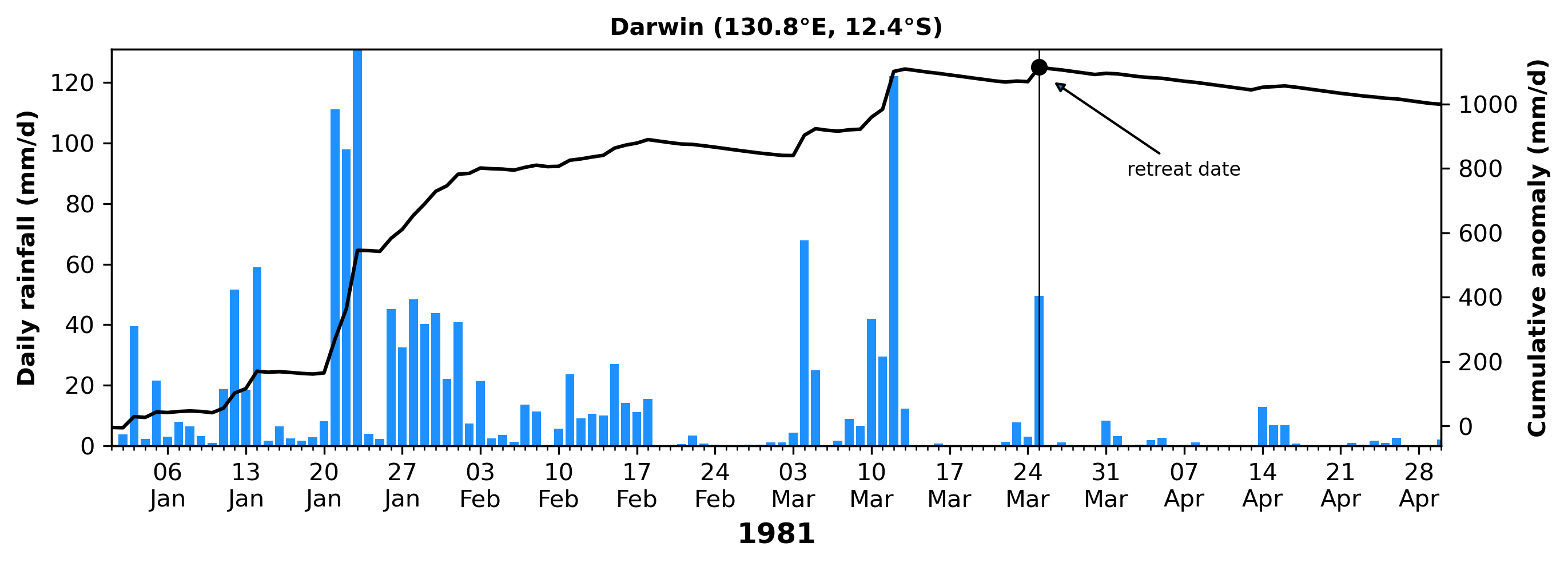Northern Rainfall Retreat - 30th Percentile

Get NRR Data for Your Location
Search for a suburb or town to see retreat dates for your location.
About the Northern Rainfall Retreat (NRR)
The Northern Rainfall Retreat (NRR) is described as the date of the last significant rains at a given location before the end of the northern wet season (e.g., 30 April). It can sometimes be called the retreat of the wet season (Lo et al. 2008) or retreat of the Northern Australian rainy season (Uehling et al. 2021).
In the northern cattle industry, end of wet season rainfall events can affect the transport and sale of livestock, disrupt crop ripening and harvesting, and if extreme enough, cause significant damage to infrastructure and impact herd numbers.
For this NRR tool, the definition is based off the Northern Australian rainy season retreat as shown in Uehling et al. (2021). It is defined as the date when the cumulative daily anomaly of rainfall at a particular location reaches a maximum. The cumulative anomaly definition describes the removal of a multi-year daily mean amount from each day's rainfall total and then this anomaly is accumulated from a given start date (i.e. 1 January).
An example of the cumulative anomaly definition for the NRR is shown below in the time series plot for Darwin from January to April 1981. Persistent rainfall, as shown by the blue bars, is observed throughout January into mid-February, followed by a dry period, before two rainfall events in early March. The cumulative anomaly builds with each daily rainfall event, until it peaks on 25 March with ~50 mm of rain.

The maps above show the historical median retreat (50th percentile), early retreat (30th percentile) and late retreat (70th percentile) dates based on daily January-April rainfall observations from 1950-2019. The observations come from the Australian Gridded Climate Data. The range of dates (30th, 50th, 70th percentiles) allows a user to determine when they would typically expect their earliest, middle and latest retreats (Cowan et al. 2024).
Historically, Darwin usually experiences its retreat between 21 March (30th percentile) and 9 April (70th percentile), with a median of 28 March. Users can select any location north of 30°S, except for mapped regions in dark grey. These show locations with sparse rainfall observations or where retreats do not occur in 30% or more years.
Further reading
Cowan et al. 2022: Forecasting northern Australian summer rainfall bursts using a seasonal prediction system. Weather and Forecasting, 37, 23–44. doi:10.1175/ WAF-D-21-0046.1
Cowan et al. 2024: Observing and forecasting the retreat of northern Australia's rainy season. Journal of Southern Hemisphere Earth Systems Science, 74, ES23022. doi:10.1071/ES23022
Lo et al. 2008: Improving predictions of the North Australian wet season: onset and duration. CAWCR Technical Report Number 001. CSIRO and the Bureau of Meteorology. https://www.cawcr.gov.au/technical-reports/CTR_001.pdf
Uehling et al. 2021: Characterizing the local variations of the northern Australian rainy season. Monthly Weather Review, 149, 3995–4004. doi:10.1175/MWR-D-21-0093.1
